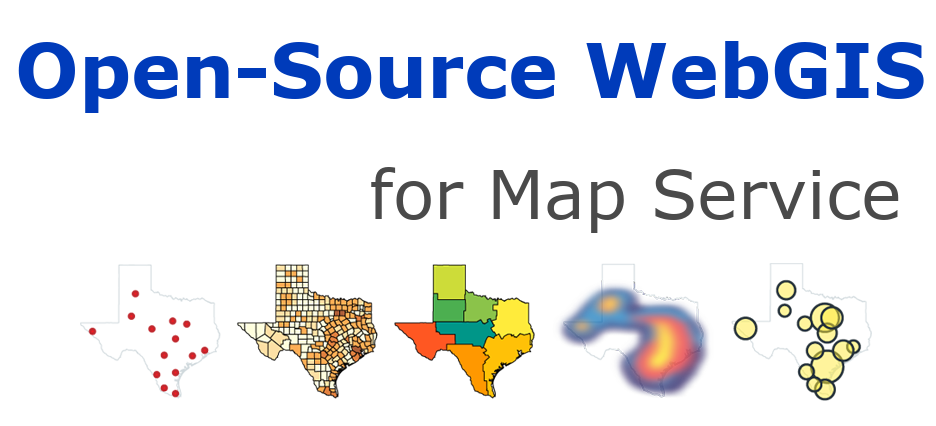2.3. Installation and use of MapProxy#
MapProxy is the Swiss Army knife of WMS web map service and slicing service provider. It caches, accelerates and transforms existing data services and serves any desktop and web client that supports the OGC standard.
2.3.1. MapProxy installation#
At present, MapProxy is already in the official source of Debian/Ubuntu,
and you can use the apt Command to install.
To use a newer version, you can establish a Python virtual environment,
and then use the pip Command to install.
MapProxy1.11.0 installation: refer to official help
Create a virtual environment for Python
Administrator privileges are required to install dependencies.
sudo apt install python-imaging python-yaml libproj9
sudo apt install libgeos-dev python-lxml libgdal-dev python-shapely
With regard to dependent class libraries, libproj, Proj4 is a coordinate transformation library; Pillow,Pillow (PIL) is an image processing library.
Installation
pip install PyYAML
Shapely and GEOS (optional)
If you want to use the coverage feature of MapProxy, you need to install
Shapely. Shapely provides Python bindings for the GEOS library. To
install and use, you need libgeos-dev Vs. python-shapely . If a
newer version (1.2.0 or later) of Shapely is not available on the
system, you can use the pip Command is installed as a third-party
package for Python.
GDAL (optional)
The coverage feature allows users to read geometry from OGR databases
(Shapefiles, PostGIS, etc.). This package is optional and only support
for OGR data sources (BBOX,WKT and GeoJSON overrides are natively
supported) is required. OGR is GDAL ( libgdal-dev ) part of the
package.
Lxml (optional)
Lxml is used to support more advanced WMS feature information
operations, such as XSL transactions, or to connect multiple XML/HTML
documents. The name of this package is python-lxml .
Install MapProxy
pip install MapProxy
To check whether the installation is successful, use the following command
mapproxy-util --version
Create a profile for MapProxy:
mapproxy-util create -t base-config mymapproxy
This command creates a folder called mymapproxy that contains a minimum
sample configuration ( mapproxy.yaml And seed.yaml ), and two
completed sample configuration files full_example.yaml 和
full_seed_example.yaml ).
Start the test service
cd mymapproxy
mapproxy-util serve-develop mapproxy.yaml
Start the service on the specified port
mapproxy-util serve-develop ~/mapproxy/mapproxy.yaml -b 0.0.0.0:8011
MapProxy comes with a demo service that lists all configured WMS and TMS layers. You can access that service by visiting http://localhost:8080/demo/.
2.3.2. Use#
Then configure the mapproxy.yaml file according to the tutorial. The following is an introduction to the components of the configuration file. During testing, only the mapproxy.yaml configuration was used.
mapproxy.yaml and seed.yaml
Mapproxy.yaml: the main configuration file that configures all parts of the service, such as which services need to be started, where the data comes from, and those that need to be cached
Mapproxy-seed mapproxy creates all the required images, and to speed up requests, this tool can cache one or more polygonal areas.
The configuration file uses the YAML format mapproxy.yaml It mainly
includes the following parts:
globals : Set default values, global variables that can be used in
other configuration sections.
services : Services provided by MapProxy, such as jWMS or TMS.
sources : Defines where MapProxy can fetch new datasets.
caches : configure internal caches
layers : Configure the layers provided by MapProxy, each layer can
contain multiple data sources and caches.
grids : defines the grid that MapProxy uses to arrange cached images
Note that to maintain formatting, you cannot use the tab key, but only the spacebar.
The contents of the configuration file are posted as follows, and the code looks like this:
services:
tms:
use_grid_names: true
layers:
- name: my_layer
title: WMS layer from tiles HiFleet
sources: [mycache]
caches:
mycache:
grids: [webmercator]
sources: [my_tile_source]
sources:
my_tile_source:
type: tile
url: url.png
grids:
webmercator:
base: GLOBAL_WEBMERCATOR
srs: 'EPSG:3857'
For this example, you can use LeafLetJS or OpenLayers for access testing.
The code for posting OpenLayers is as follows:
var raster = new ol.layer.Tile({
source: new ol.source.XYZ({
url:'http://localhost:8080/tms/1.0.0/my_layer/webmercator/.png'
}),
opacity: 1,
visible:false
});
